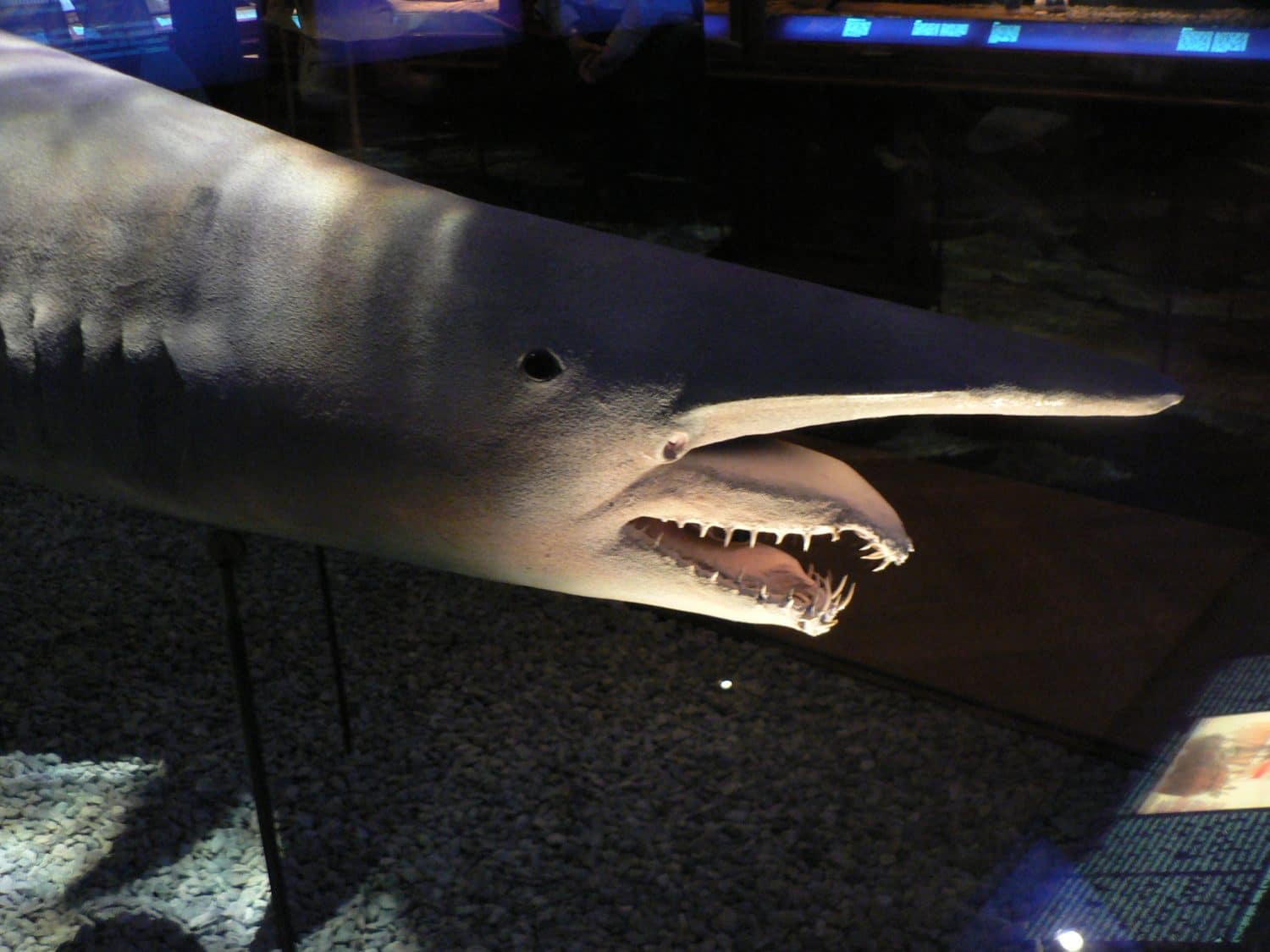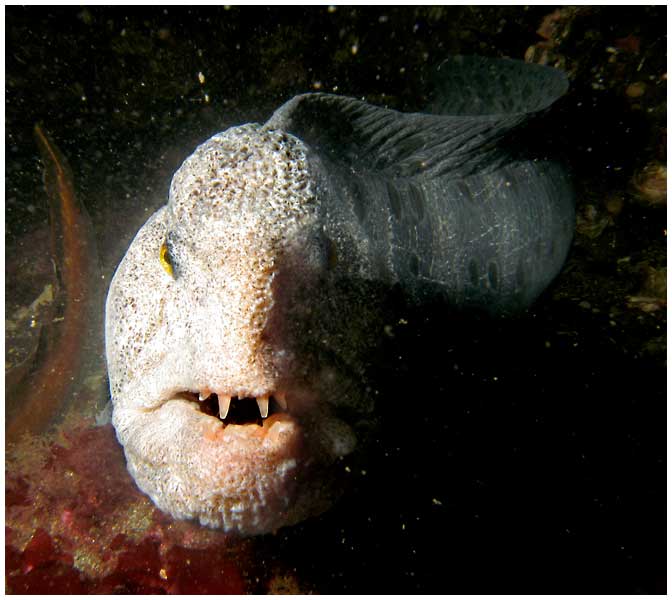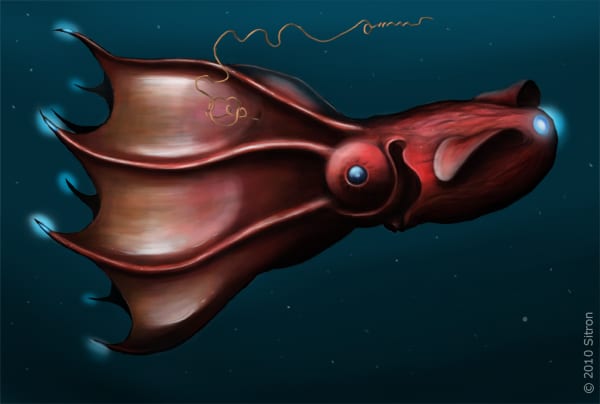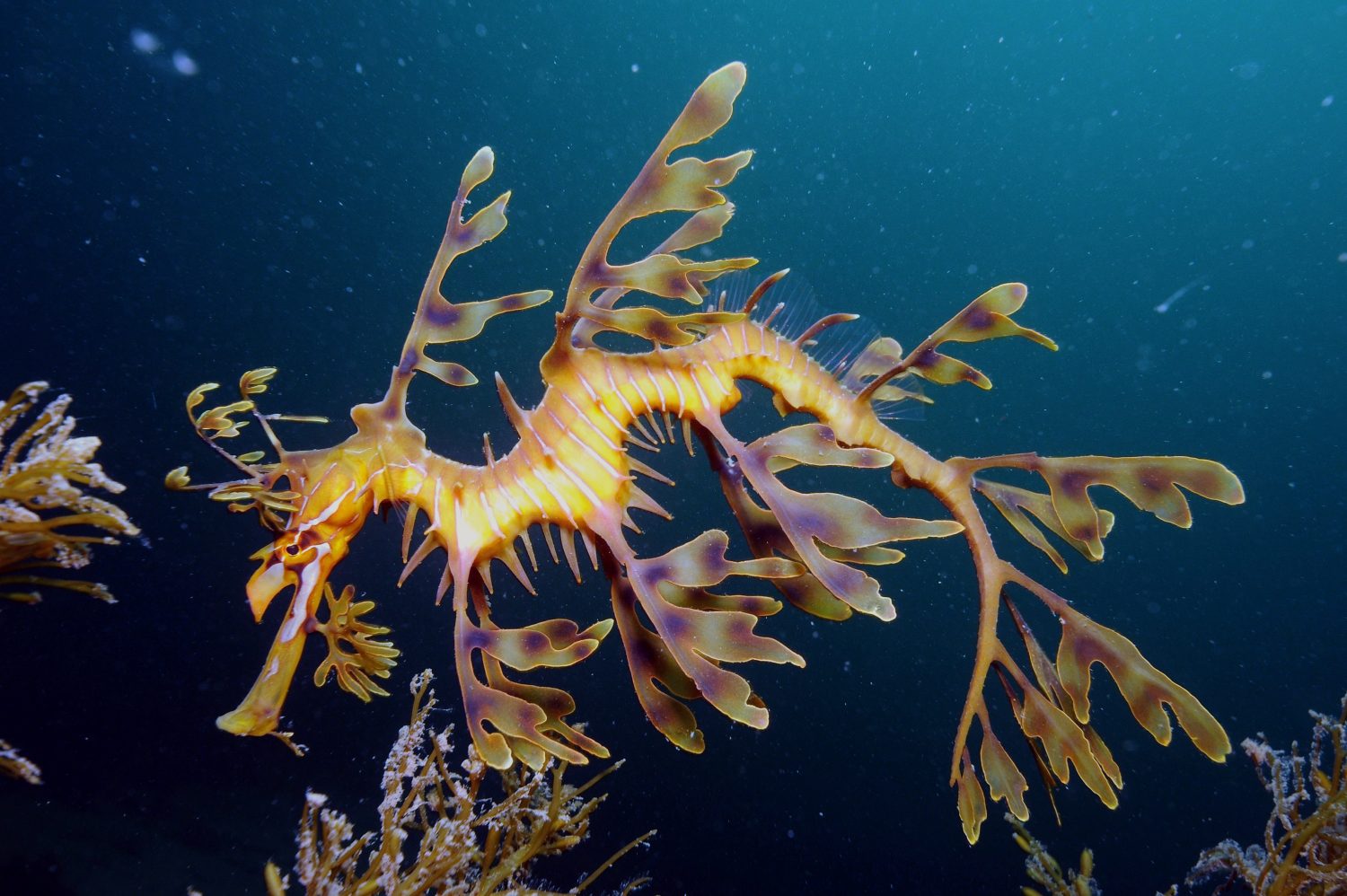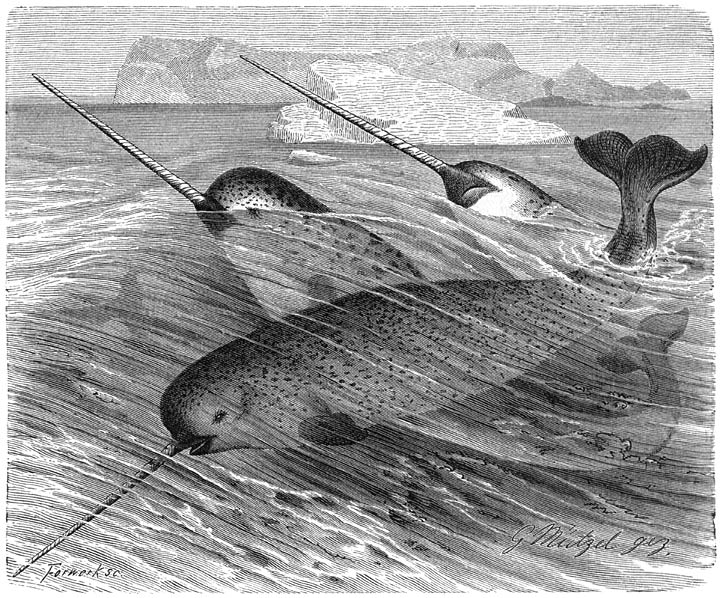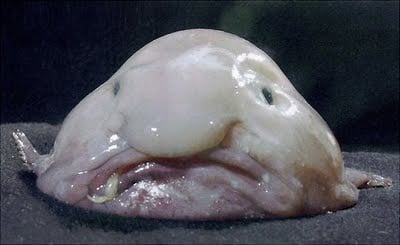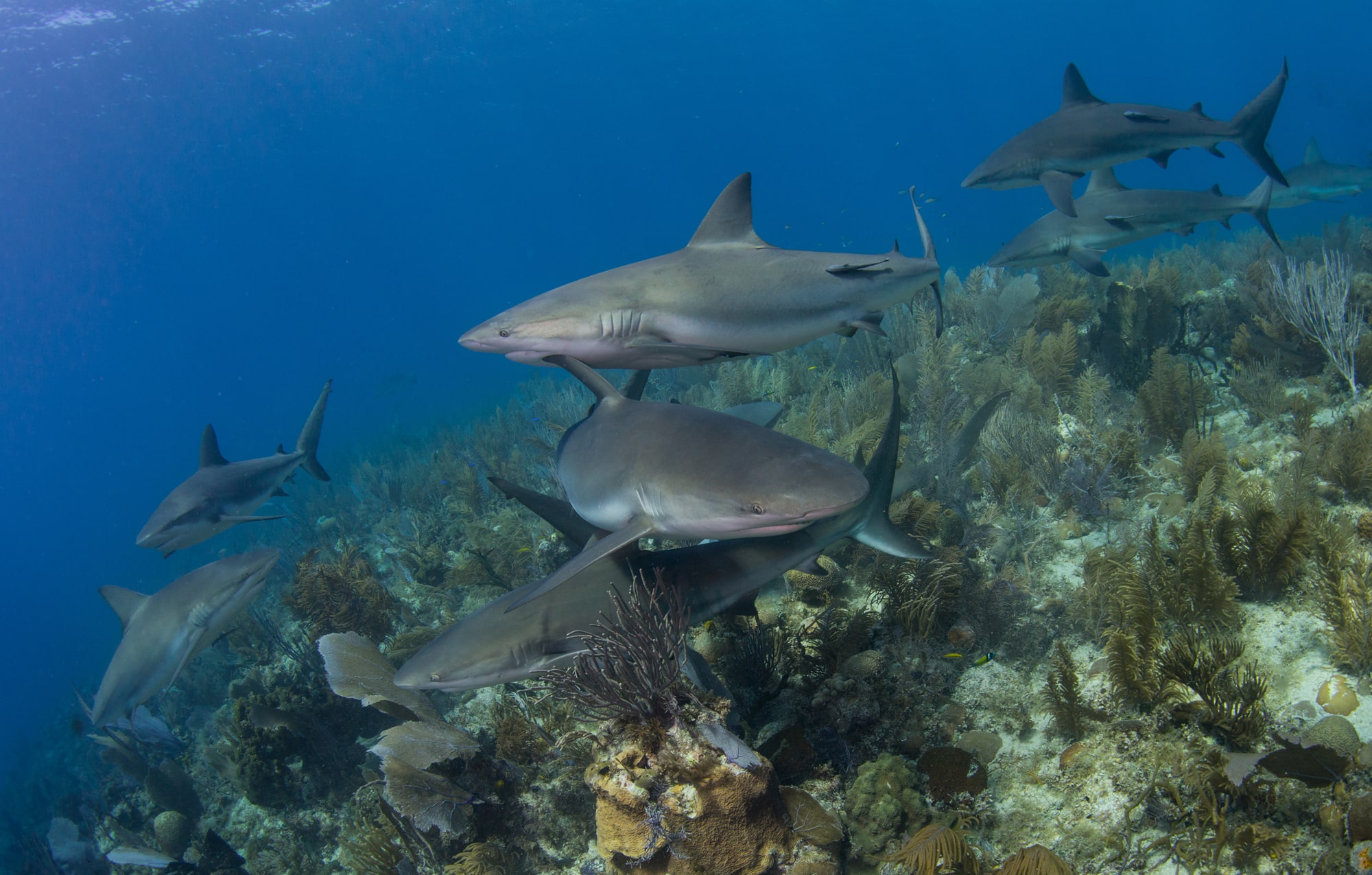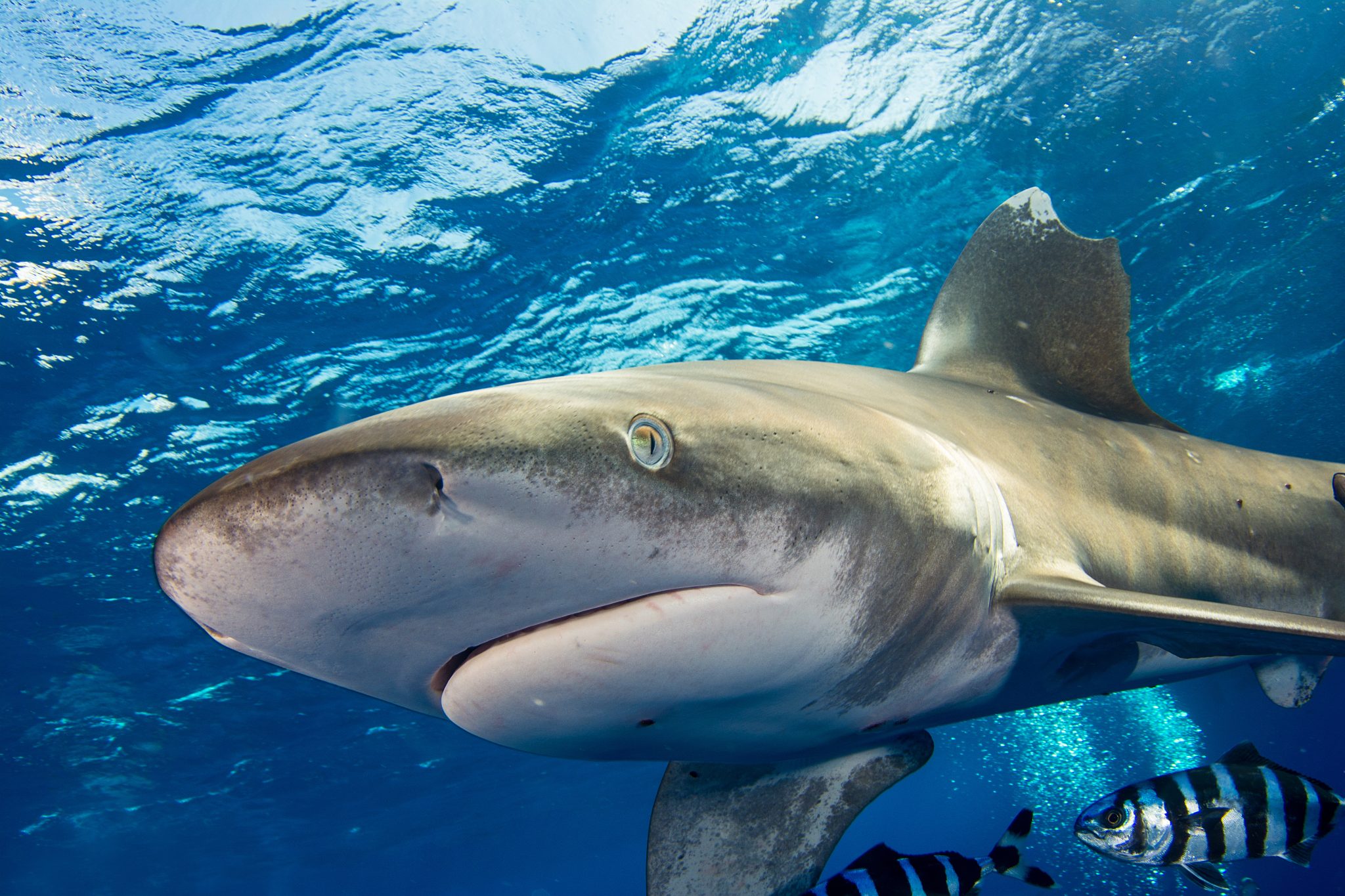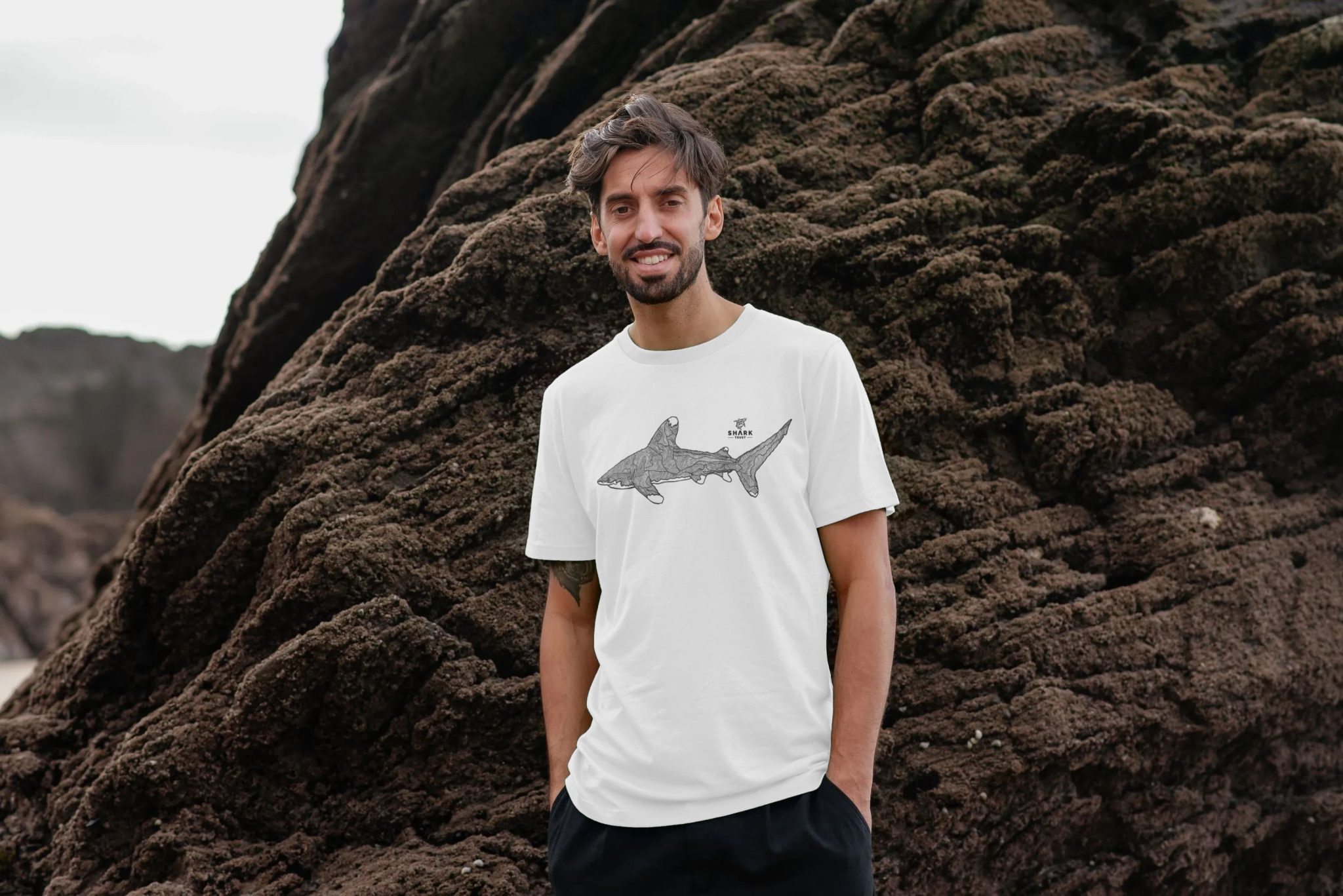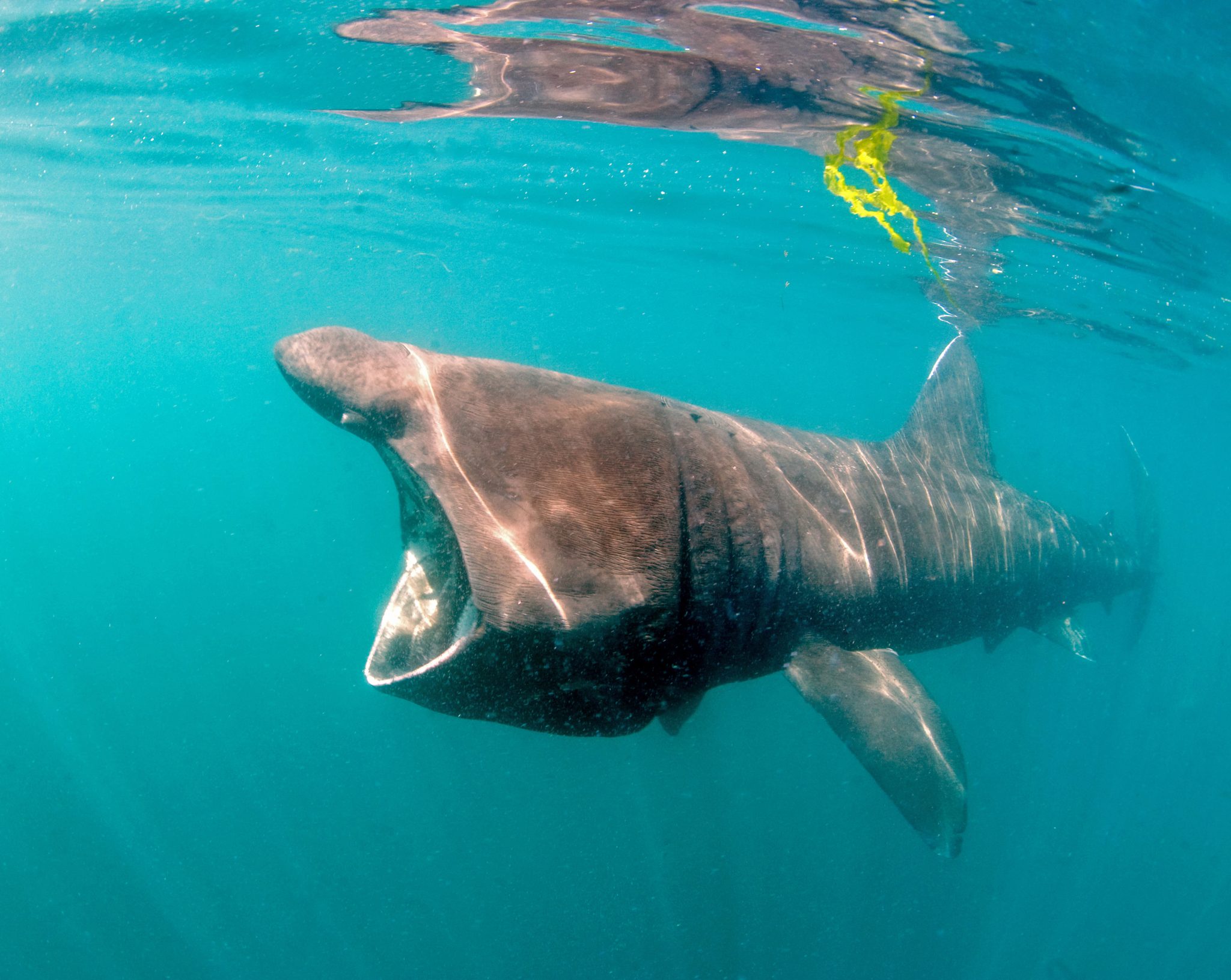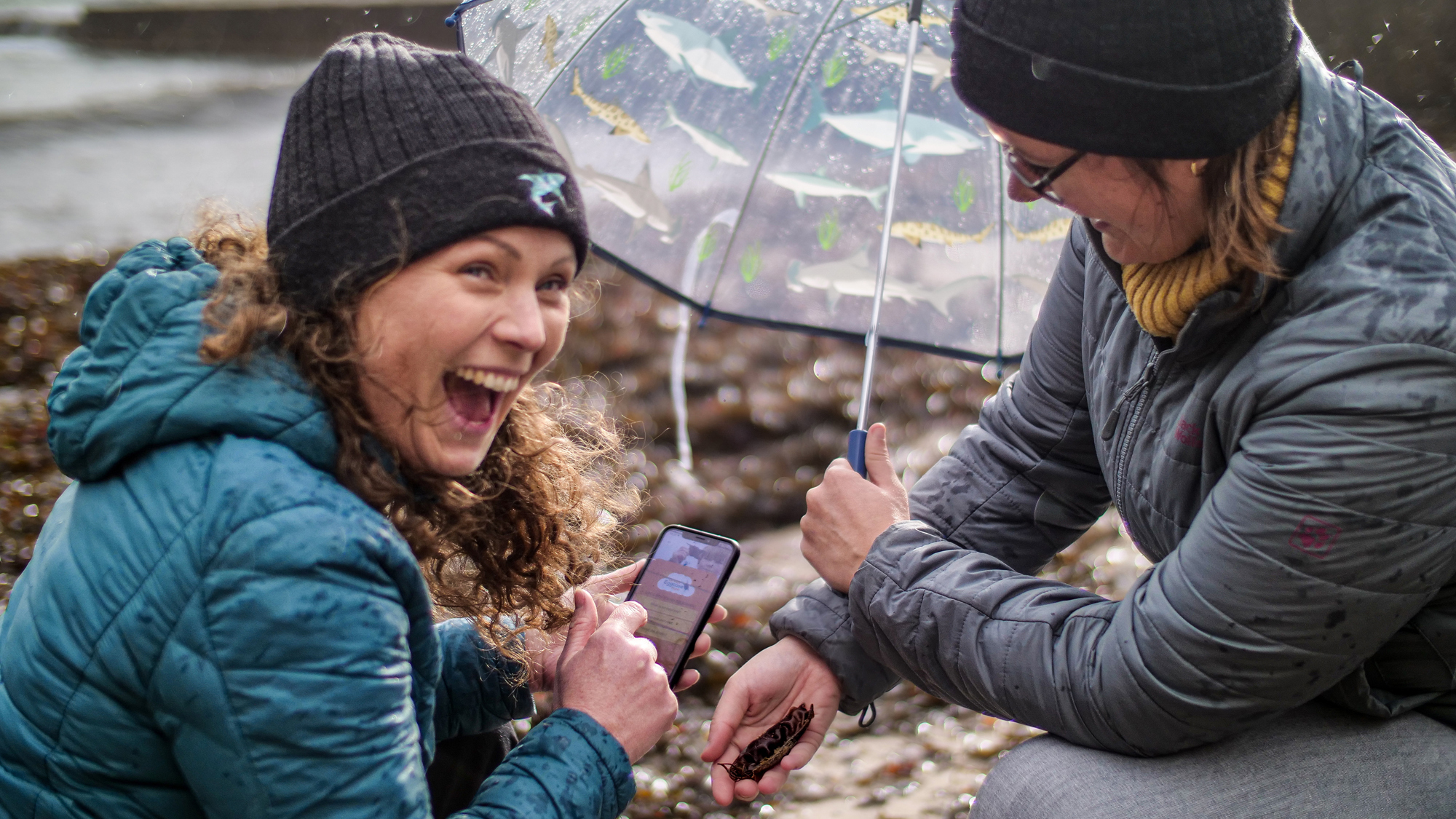Marine Life & Conservation
Fantastic (Underwater) Beasts, and where to find them!

By Gemma Smith
It is fair to say that there might not be that many underwater-specific spells, curses, potions or lotions. There may also be a distinct lack of any Nifflers, Nogtails, or Mooncalfs to see when we submerge and go diving. However, while we often look beyond the confines of our own world for enchantment and excitement, it is true without a doubt that the life we can encounter beneath the waves is bursting full of magic. As divers, we have a privileged portal to another world. And for many people, it may be even more captivating than they realise. There are just so many fantastic and mysterious animals living in our watery world. And these are just the ones we know about. There is so much left to explore in our oceans. Who knows what incredible creatures may still be unseen and undiscovered? And even for those more unusual ocean inhabitants, I think it’s important we always remember their unique charms! So, to showcase some of my favourite Blue Planet companions, here are my top five real-life ‘magical creatures.’
Goblin shark
The name alone is enough to intrigue you. Any animal named after the fabled goblin of fairytales and folklore is guaranteed to be amazing. In the Goblin Shark, you will not be disappointed. Even more interesting is how little we actually know about this species of shark. As a deep sea creature, it is the only remaining member of the ancient Mitsukurinidae family. Being referred to as a ‘living fossil’ is a testament to its ancestry. After all, it goes back all the way to the Cretaceous period!! This in part explains its surprising and primitive characteristics. It is best known for its unusual shaped snout, quite different from other shark species. Perhaps even more remarkable than its sword-like snout is it’s expanding jaw. It is able to move independently, and extend out when hunting. This is a peculiar, and perhaps bizarre, adaptation. Found swimming in depths ranging from around 40m/130ft to 1300m/4300ft, it might not be a sight you’d see on your standard dive, but there is no doubt these animals are otherworldly and incredible, with their translucent pinkish hue.
Where to find them: the Goblin shark is actually very widely distributed. Many of these sharks were caught off the coast of Honshu, Japan, at varying depths. More specimens were found in the Sagami and Suruga Bays of the same country. There is evidence of others in New Zealand and Australia. It is currently thought that they largely live near the sea bottom in the Indian, Pacific, and Atlantic Oceans.
Wolf-eel
Going somewhat against its name, the wolf-eel is actually not a true eel. It is one of just five species found in the ‘wolf fish’ family. I have many happy memories of diving with these wolf-eels in the cold ocean surrounding Iceland. Swimming in the freezing water around this country, then coming face to face with this prehistoric looking animal is always exciting. Striking and impressive they undoubtedly are…cuddly looking, though they are not. With a mouthful of sharp-looking teeth, a powerful jaw, and lengths over 2.5m/ 8ft long, they are a sight to behold. Their vicious appearance is actually not the whole story though. Wolf-eels tend to move slowly, and generally are only aggressive to fellow wolf-eels. In fact, there are many stories of wolf-eels becoming quite used to divers, and even eating from the palm of a diver’s hand! They are also secretly quite romantic! Pairs of wolf-eels are often known to mate for life. They are also devoted parents, with both staying in their den to guard their eggs while they wait for them to hatch.
Where to find them: unlike me, these wolf-eels like the cold. You can find them in the cooler waters of the Northern Pacific, ranging across from the Sea of Japan and the Aleutian Islands to California.
Vampire Squid
If we look at the Latin name for the vampire squid (Vampyroteuthis infernalis). We are greeted by one of the catchiest animal classifications possible. Roughly translating to ‘vampire squid from Hell’. There is no question of the initial impact this little cephalopod had on its audience! They are actually not nearly as scary as the name would suggest though. The ‘vampire’ in its title is simply in reference to its reddish-brown skin, the webbing between its arms which resembles a cape, and its red (and sometimes blue) eyes. Far from being the blood-sucking creatures of lore, they are harmless. Growing up to around only 30 cm/1 foot in length, they are the only currently known cephalopod that does not catch and eat live animals for food. While research is always ongoing, it is believed that these squids live primarily on ‘marine snow’. Marine snow is simply the sinking detritus from above them in the water column. While this ‘snow’ might not seem sufficient to live on, these vampire squids are frugal. Because they are living at depths with so little oxygen there are not many other creatures that could survive there. This means there is very little need to expend energy in order to escape from predators.
Where to find them: Vampire squid tend to occupy the temperate and tropical regions of the ocean. They do not like the shallows though and prefer to hang out in the 600m/2000ft to 900m/3000ft range.
Leafy Sea Dragon
I always knew dragons were real and incredible, and with the leafy sea dragon I wasn’t let down! This beautiful underwater creature is a marine fish belonging to the family Syngnathidae. This same family also includes pipefish and seahorses. While the leafy sea dragon resembles a seahorse more than a pipefish, it is thought more likely that it is, in fact, an intermediate step between the two. They get their name from their delicate covering of leaf-life appendages over all of their bodies. This is partly what makes them one of the best-camouflaged creatures you will (or won’t!) be lucky enough to see. They are perfectly adorned to blend in with the surrounding kelp and seaweed of the environment in which they live. While larger than their seahorse relatives, they are still relatively small. You will need keen eyes to pick them out on a dive. It will be worth it if you take the time to do so though.
Where to find them: The leafy sea dragon has only ever been recorded along the southern coastline of Australia. They like to live among seaweed beds, rocky reefs, and on sand patches close by weed-covered reefs. This way they can easily blend in to look like seaweed drifting in the current.
Narwhal
This animal is the closest most of us will ever get to seeing an actual unicorn. The narwhal is a true triumph of beauty and grace. It’s most striking feature is undoubtedly the long ‘tusk’ protruding from its head, which can grow up to 3m/10ft in length. Interestingly, this tusk is actually an enlarged tooth! It is a feature most commonly seen on males, although females have also been seen with one. Some whales can even have two tusks! Recent studies have indicated that these tusks may actually have quite significant sensory capabilities.
Together with beluga whales, the narwhal is one of only two living species of whale in the monodontidae family. They have captured the imagination of people for centuries. In legend, literature, art, and photography, the narwhal has always been a favourite subject. In fact, the Inuit believed the narwhal was a once a woman who fell into the sea, and whose long plaited hair is the explanation for the spiralling tusk of the narwhal. This happened when she was initially transformed from woman to whale. Looking at this beautiful animal, it’s not hard to see why it has continued to intrigue people through the ages.
Where to find them: make sure you wrap up warm for this one! Narwhals do not have a problem with cold water and spend all year in the Arctic waters around Canada, Greenland, and Russia.
Blobfish
Last, but definitely not least, there is the Blobfish. I almost didn’t include this one, but then I think it’s important to remember that beauty comes in all shapes and sizes! While the Blobfish is not the most photogenic animal you may see (after all, it was voted the world’s ugliest animal in 2013!), it is without question an interesting one. A deep sea dwelling fish, it is found at average depths of around 915m/3000ft, although sometimes much deeper as well. They spend their entire lives on the sea floor and have only been found when caught in trawling nets and brought to the surface. Due to the extreme pressure change the Blobfish never survives this. It is believed that at depth they may actually look much less engorged and that perhaps the marked decrease in pressure is to blame. Due to their preference for living at such depths, we really know very little still about this small creature. I have no doubt there is more to them than meets the eye!
Where to find them: Blobfish are native to the waters off Australia and New Zealand. Unfortunately, diving technology is not yet quite up to the depth requirement to see them in person. It will have to be a submarine if they are on your bucket-list of ‘fantastic beasts’ to encounter!
To find out more about International Training, visit www.tdisdi.com.

Marine Life & Conservation
Leading UK-based shark conservation charity, the Shark Trust, is delighted to announce tour operator Diverse Travel as a Corporate Patron
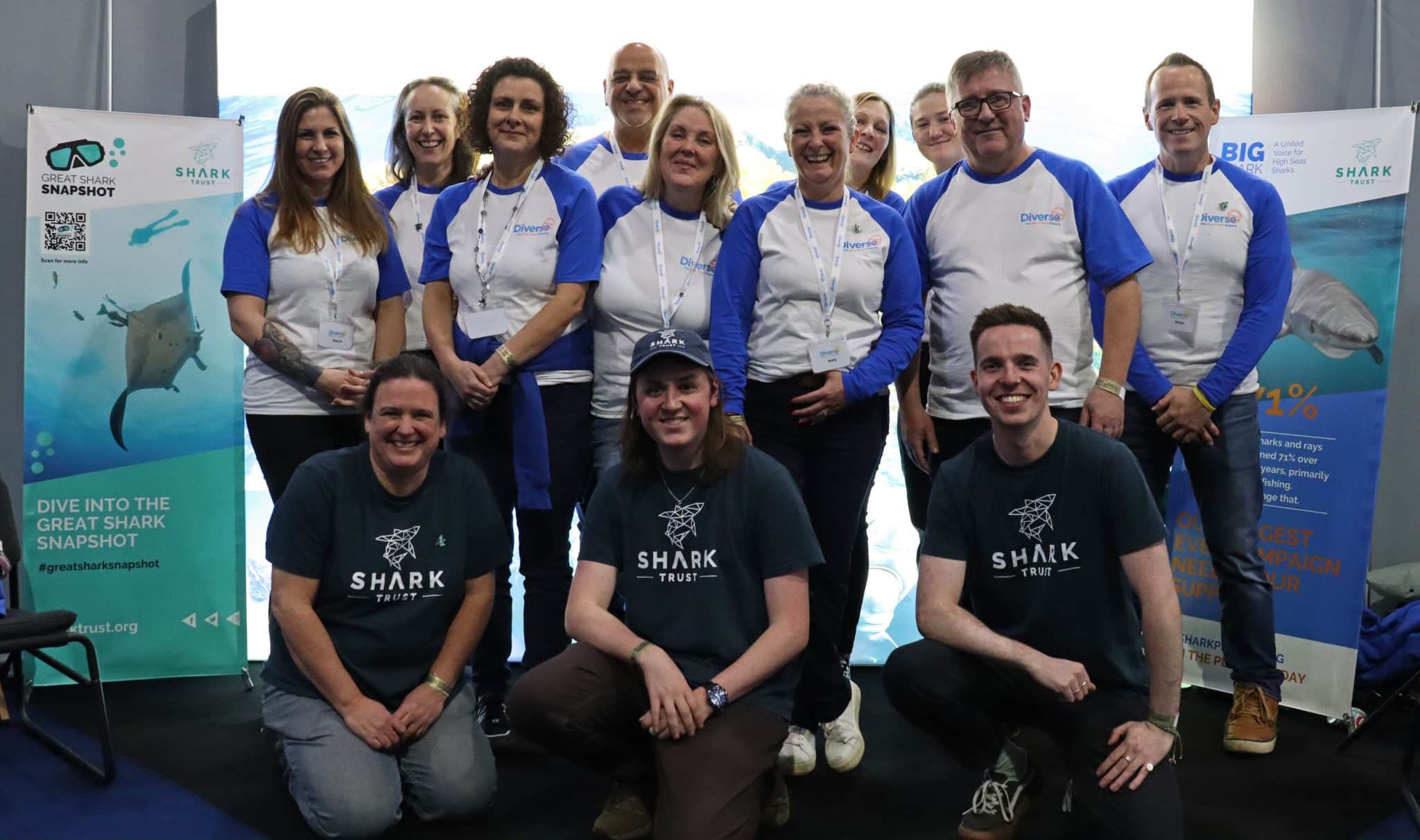
 Corporate Patrons provide a valuable boost to the work of The Shark Trust. The Trust team works globally to safeguard the future of sharks, and their close cousins, the skates and rays, engaging with a global network of scientists, policymakers, conservation professionals, businesses and supporters to further shark conservation.
Corporate Patrons provide a valuable boost to the work of The Shark Trust. The Trust team works globally to safeguard the future of sharks, and their close cousins, the skates and rays, engaging with a global network of scientists, policymakers, conservation professionals, businesses and supporters to further shark conservation.
Specialist tour operator Diverse Travel has operated since 2014 and is committed to offering its guests high quality, sustainable scuba diving holidays worldwide. Working together with the Shark Trust will enable both organisations to widen engagement and encourage divers and snorkellers to actively get involved in shark conservation.
“Sharks are truly at the heart of every diver and at Diverse Travel, we absolutely share that passion. There is nothing like seeing a shark in the wild – it’s a moment that stays with you forever!” says Holly Bredin, Sales & Marketing Manager, Diverse Travel.
“We’re delighted to celebrate our 10th year of business by becoming a Corporate Patron of the Shark Trust. This is an exciting partnership for Diverse and our guests. We will be donating on behalf of every person who books a holiday with us to contribute towards their vital shark conservation initiatives around the world. We will also be working together with the Trust to inspire divers, snorkellers and other travellers to take an active role – at home and abroad – in citizen science projects and other activities.”
Paul Cox, CEO of The Shark Trust, said:
“It’s an exciting partnership and we’re thrilled to be working with Diverse Travel to enable more divers and travellers to get involved with sharks and shark conservation. Sharks face considerable conservation challenges but, through collaboration and collective action, we can secure a brighter future for sharks and their ocean home. This new partnership takes us one more valuable step towards that goal.”
For more information about the Shark Trust visit their website here.
For more about Diverse Travel click here.
Marine Life & Conservation
Shark Trust Asks Divers to help with Shark Sightings this Global Citizen Science Month
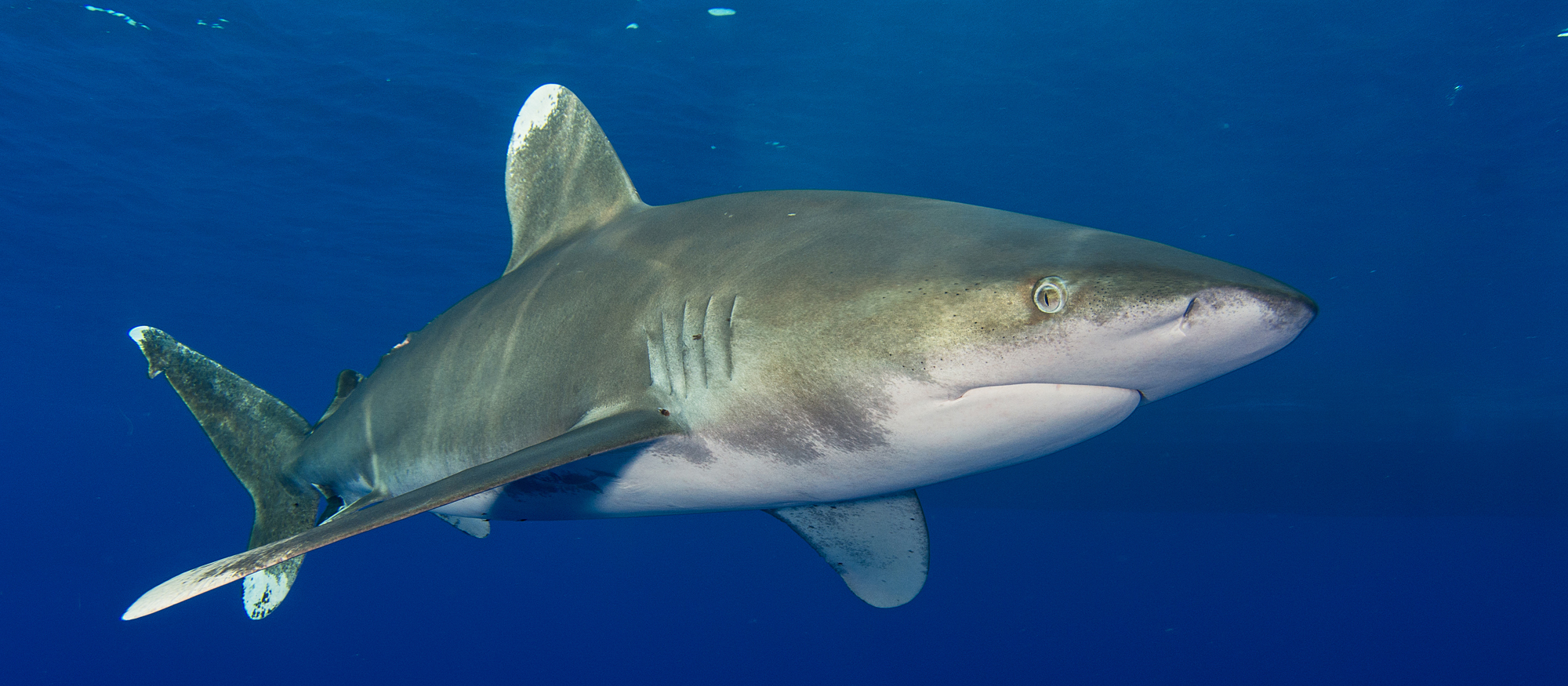
 Whether you are stuck for ideas of what to do with the kids or are off on the dive trip of your dreams. You can get involved in Citizen Science Month and help the Shark Trust by providing vital data about sharks are rays both close to home and further afield.
Whether you are stuck for ideas of what to do with the kids or are off on the dive trip of your dreams. You can get involved in Citizen Science Month and help the Shark Trust by providing vital data about sharks are rays both close to home and further afield.
In addition to reporting the sharks and rays you see on your dives, the eggcases you find on the beach, the Shark Trust is looking for some specific data from divers who are asked to report any Oceanic Whitetip and Basking Sharks.
Oceanic Whitetip Sharks
The Shark Trust are looking specifically for Oceanic Whitetip Shark sightings over the coming weeks and months. So, if you are diving anywhere in the world, please report your sightings via the website or app.
Website: https://recording.sharktrust.org/
App: Search The Shark Trust in your app store
The Oceanic Whitetip. Known for their incredibly long dorsal and pectoral fins, this species was once the most abundant oceanic-pelagic species of shark on the planet.
Large and stocky, they are grey or brown above, and white below and famous for their huge rounded first dorsal fin and paddle-like pectoral fins. The fins also highly prized within the shark fin trade. Whilst they are mostly solitary, Oceanic Whitetips do occasionally hunt in groups.
An inquisitive species, they were easy prey for fisheries. Combined with their low reproductive rate, they were inevitably at high risk of population depletion. And declines of up to 99% have been reported in certain sea areas. They are listed as Critically Endangered on the IUCN Redlist (2019).
Conservation efforts to discourage further declines include listing on CITES Appendix II and CMS Appendix I. They’re also the only species prohibited from take by all the Tuna RFMOs (Regional Fisheries Management Organisations). However, these measures do not mean that Oceanic Whitetips are not still caught – whether targeted or as bycatch – in some parts of the world. With populations declining at such a high rate, effective implementation of management measures is essential to ensure that the species can recover.
If you are lucky enough to get an image of an Oceanic Whitetip and you record your sighting on the Shark Trust app or website YOU CAN WIN! All images submitted with sightings, that also give consent to use in conservation messaging, will be in with a chance to win an Oceanic Whitetip T-shirt and mug. The competition will run until the end of “Shark Month” in July – so keep those sightings (and images) coming in.
Basking Sharks
Basking Shark (Cetorhinus maximus) season is upon us, and the Shark Trust is asking everyone to keep an eye out for these majestic giants over the summer months. If you see any, you can record your sighting to the Basking Shark Sightings database.
Each year, these mighty fish return to British waters to feed on plankton. You may see one, (or a few if you’re really lucky) from around April-October. They can be seen feeding at the surface of the water, where they look like they’re basking in the sun. Thus, their name!
Sighting hotspots around the British Isles include southwest England, Isle of Man, north coast of Ireland, and western Scotland. The Sea of the Hebrides is the most prolific sightings area in Scotland, but they have been spotted all around the coast and have even ventured into some of the sea lochs. The Shark Trust has received thousands of sightings since the Basking Shark project began, but more data is needed to truly understand what is going on with population numbers and distribution. You can help by recording your sightings this summer.
Great Eggcase Hunt
The Shark Trust has an Easter Egg Hunt with a difference for you to try. Take part in the Great Eggcase Hunt and get involved with a big citizen science project that helps shark, ray and skate conservation. And it’s an enjoyable activity for all the family.
The Shark Trust also want snorkellers and divers to record their underwater eggcase findings. Underwater records help pinpoint exactly where sharks and skates are laying their eggs and can help link to beach records. Learning the depth and substrate that they lay on also helps better understand the species.
Find out more: https://www.sharktrust.org/great-eggcase-hunt
Whether you are diving, snorkelling or exploring on the beach you can take part in Citizen Science Month and get actively involved in shark and ray conservation. Find out more: www.sharktrust.org
-

 News3 months ago
News3 months agoHone your underwater photography skills with Alphamarine Photography at Red Sea Diving Safari in March
-

 News2 months ago
News2 months agoCapturing Critters in Lembeh Underwater Photography Workshop 2024: Event Roundup
-

 Marine Life & Conservation Blogs2 months ago
Marine Life & Conservation Blogs2 months agoCreature Feature: Swell Sharks
-

 Blogs2 months ago
Blogs2 months agoMurex Resorts: Passport to Paradise!
-

 Blogs2 months ago
Blogs2 months agoDiver Discovering Whale Skeletons Beneath Ice Judged World’s Best Underwater Photograph
-

 Gear News3 months ago
Gear News3 months agoBare X-Mission Drysuit: Ideal for Both Technical and Recreational Divers
-

 Gear Reviews2 months ago
Gear Reviews2 months agoGear Review: Oceanic+ Dive Housing for iPhone
-

 Marine Life & Conservation2 months ago
Marine Life & Conservation2 months agoSave the Manatee Club launches brand new webcams at Silver Springs State Park, Florida


